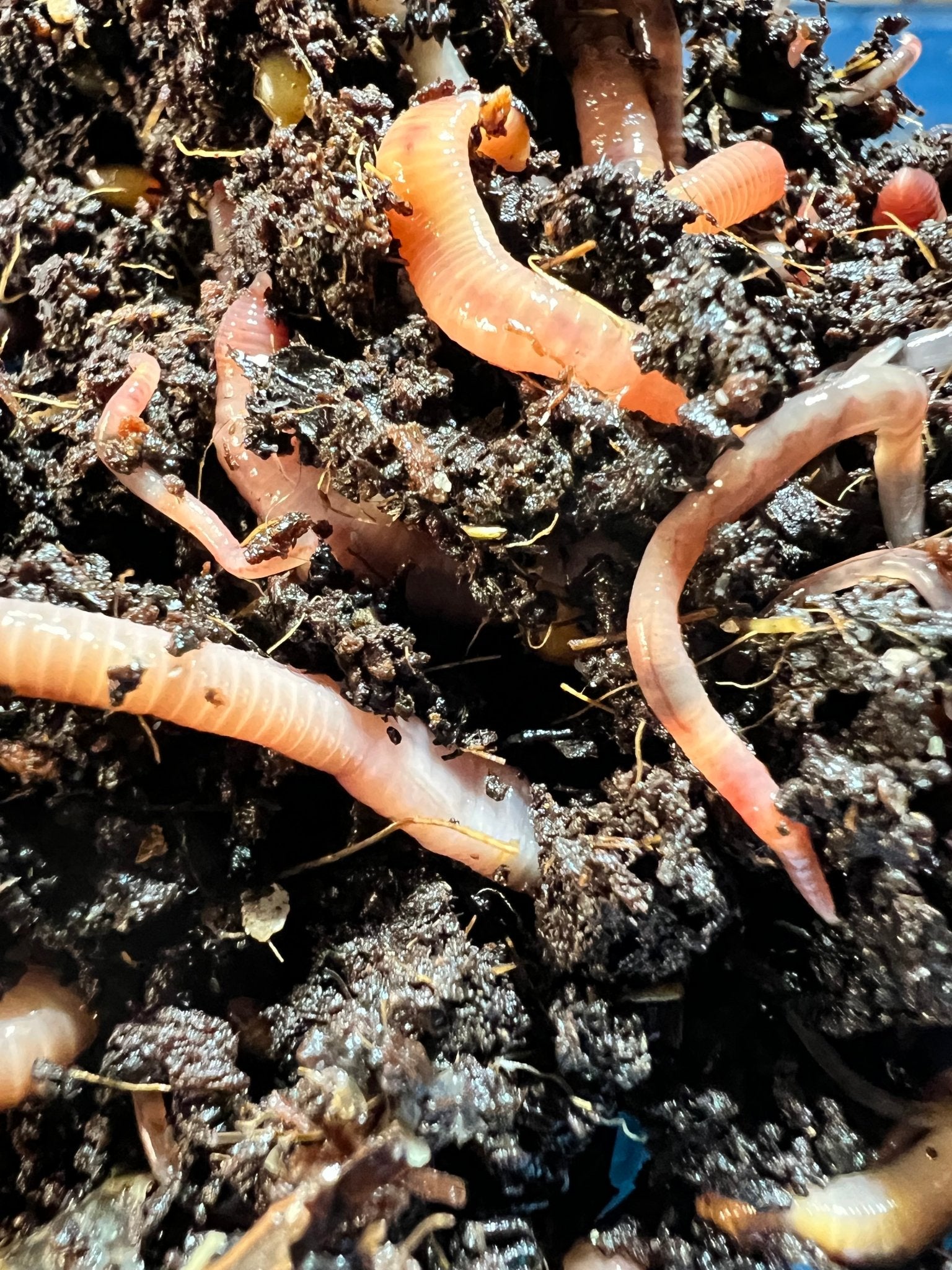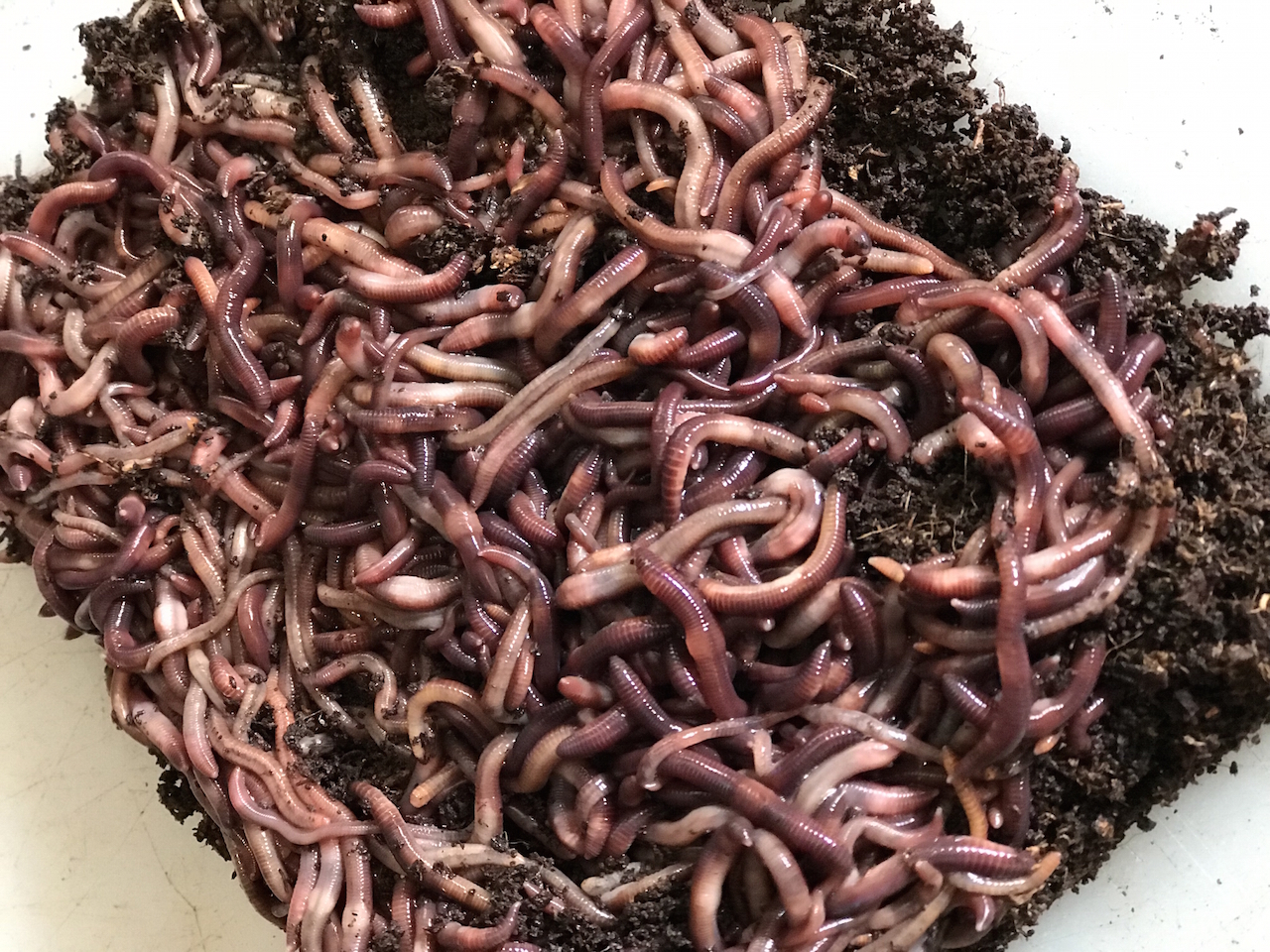Red Wigglers: The Unsung Heroes of Organic Waste Recycling
Red wigglers, or Eisenia fetida, offer as critical representatives in the organic waste recycling process, transforming discarded materials right into valuable vermicompost. Their efficient breakdown of raw material not just boosts dirt top quality yet additionally adds to sustainable waste administration methods. As the world increasingly looks for remedies to battle waste buildup and enhance agricultural productivity, understanding the role of these worms comes to be crucial. What devices enable them to flourish in compost settings, and just how can they be efficiently utilized in both residential and business setups? Exploring these questions discloses the wider implications of vermicomposting in our ecological landscape.
What Are Red Wigglers?
The amazing strength of red wigglers, clinically recognized as Eisenia fetida, highlights their crucial duty in organic waste recycling. These little, reddish-brown earthworms are generally located in breaking down raw material, such as garden compost heaps and manure stacks. Lake Hickory Bait. Unlike various other earthworm species, red wigglers grow in nutrient-rich environments and are extremely efficient at breaking down natural products, making them vital for vermicomposting

Benefits of Composting With Worms
Composting with worms, particularly red wigglers, provides various advantages that enhance both waste management and soil health. These worms efficiently break down natural waste, transforming it right into nutrient-rich vermicompost that enhances soil. This process increases disintegration, enabling a quicker recycling of kitchen area scraps and other natural products compared to conventional composting methods.
In addition, the vermicompost generated by red wigglers is including useful bacteria, which help boost dirt structure, oygenation, and wetness retention. This improves the overall wellness of plants, promoting vigorous development and enhanced yields in yards and agricultural setups. The usage of worms in composting reduces the manufacturing of greenhouse gases, such as methane, adding to a more lasting waste management system.

Just How to Begin Vermicomposting
Developing a vermicomposting system is a simple procedure that can produce substantial benefits for both waste administration and soil enrichment. To begin, choose a suitable container, such as a plastic container or wood box, with adequate ventilation holes to guarantee appropriate air flow. The dimensions ought to ideally be around 2 feet by 3 feet, enabling sufficient area for the worms to flourish.
Next, prepare bedding material, which can be composed of shredded newspaper, cardboard, or coconut coir. This bed linen must be moistened to produce a suitable habitat for the worms. As soon as the bedding remains in location, introduce red wigglers (Eisenia fetida) into the description bin, generally around one pound of worms for every square foot of surface area.
Following the positioning of worms, include natural waste, such as vegetables and fruit scraps, coffee grounds, and smashed eggshells. Stay clear of including dairy products, meat, or oils, as these can create smells and draw in bugs. Lastly, position the container in a shaded, temperature-controlled area to maintain optimum problems for worm activity. With these actions, you will efficiently initiate a vermicomposting system that adds to sustainable waste management and improves your soil.
Preserving a Healthy And Balanced Worm Container
Delicately blending the bed linens and food scraps every few weeks avoids compaction and makes sure that all worms have accessibility to oxygen. In addition, it is vital to feed the worms appropriately.
Temperature law is another vital aspect. Red wigglers flourish in a variety of 55 to 77 degrees Fahrenheit. If the bin ends up being as well warm or chilly, the worms might end up being stressed out - Lake Hickory Bait. Periodically check for signs of wellness, such as worm populace development and the existence of healthy castings. By diligently managing these variables, one can keep a durable and efficient worm bin.
Influence on Sustainable Living
The successful upkeep of a worm container not only profits the wellness of red wigglers but likewise contributes significantly to lasting living techniques. By recycling organic waste, such as kitchen area scraps and yard debris, red wigglers aid draw away substantial quantities of product from landfills. This decrease in waste not only decreases greenhouse gas exhausts however additionally lessens the environmental worry connected with waste management.
In addition, the spreadings produced by red wigglers offer as a nutrient-rich organic plant food, enhancing dirt health and advertising plant growth. This all-natural alternative to chemical plant foods supports sustainable farming and gardening techniques, decreasing dependence on synthetic inputs that can hurt ecosystems. In addition, worm composting fosters understanding of waste management, motivating people and communities to embrace even more sustainable routines.

Verdict
In recap, red wigglers offer as essential factors to natural waste reusing via their reliable disintegration of natural materials. Their capability to generate nutrient-rich vermicompost enhances soil health and sustains lasting farming techniques. By incorporating vermicomposting right into waste administration methods, people and neighborhoods can substantially minimize waste while advertising ecological sustainability. The function of Eisenia fetida in promoting healthy ecosystems underscores the significance of these microorganisms in achieving sustainable living and improving dirt fertility.
Comments on “Achieve a Greener Lawn with the Help of Red Wiggler Express Lawn Care Treatments”